Complete Solutions to Level 1 Subjective of chapter FLUID MECHANICS of Class 11 book with complete answers and questions
| Class 11 | PHYSICS |
| Chapter | FLUID MECHANICS |
| DC PANDEY | Level 1 Subjective |
| Number Of Questions | 36 |
| Academic Year | 2023-24 |
A body of weight `w_(1)` when floats in water displaces an amount of water `w_(2)`. Then `w_(1)ltw_(2)`. In this statement true or false?
View SolutionA weightless balloon is filled with water. What will be its apparent weight when weighted in water?
View SolutionTwo vessels `A` and `B` have same base area. Equal volumes of a liquid are poured in the two vessel to different heights `h_(A)` and `h_(B) (h_(B)gth_(A))`. In which vessel, the force on the base of vessel will be more?
View SolutionWork `W` is required to form a bubble of volume `V` from a given solution. What amount of work is required to be done to form a bubble of volume `2V` ?
View SolutionA man is sitting in a boat, which is floating in a pond. If the man drink some water from the pond, will the level of water in the pond decrease ?
View SolutionA metal ball weighs `0.096N`.When suspended in water it has an apparent weight of `0.071N`. Find the density of the metal.
View SolutionA block of wood has a mass of `25g`. When a `5g` metal piece with a volume of `2cm^(3)` is attached to the bottom of the block, the wood barely floats in water. What is the volume `V` of the wood?
View SolutionWhat is the minimum volume of a block of wood(density `=850kg//m^(3))` if it is to hold a `50 kg` woman entirely above the water when she stands on it?
View SolutionA cubical block of ice floating in water has to suport metal piece weighing 0.5 kg. What can be the minimum edge of the block so that it does not sink in water/ specific gravity of ice=0.9.
View SolutionWhen a cube of wood floats in water,`60%` of its volume is submerged. When the same cube floats in an unknown fluid `85%` of its volume is submerged. Find the densities of wood and the unknown fluid.
View SolutionA glass tube of radius `0.8 cm` floats vertical in water, as shown in figure. What mass of lead pellets would cause the tube to sink a further`3 cm`?
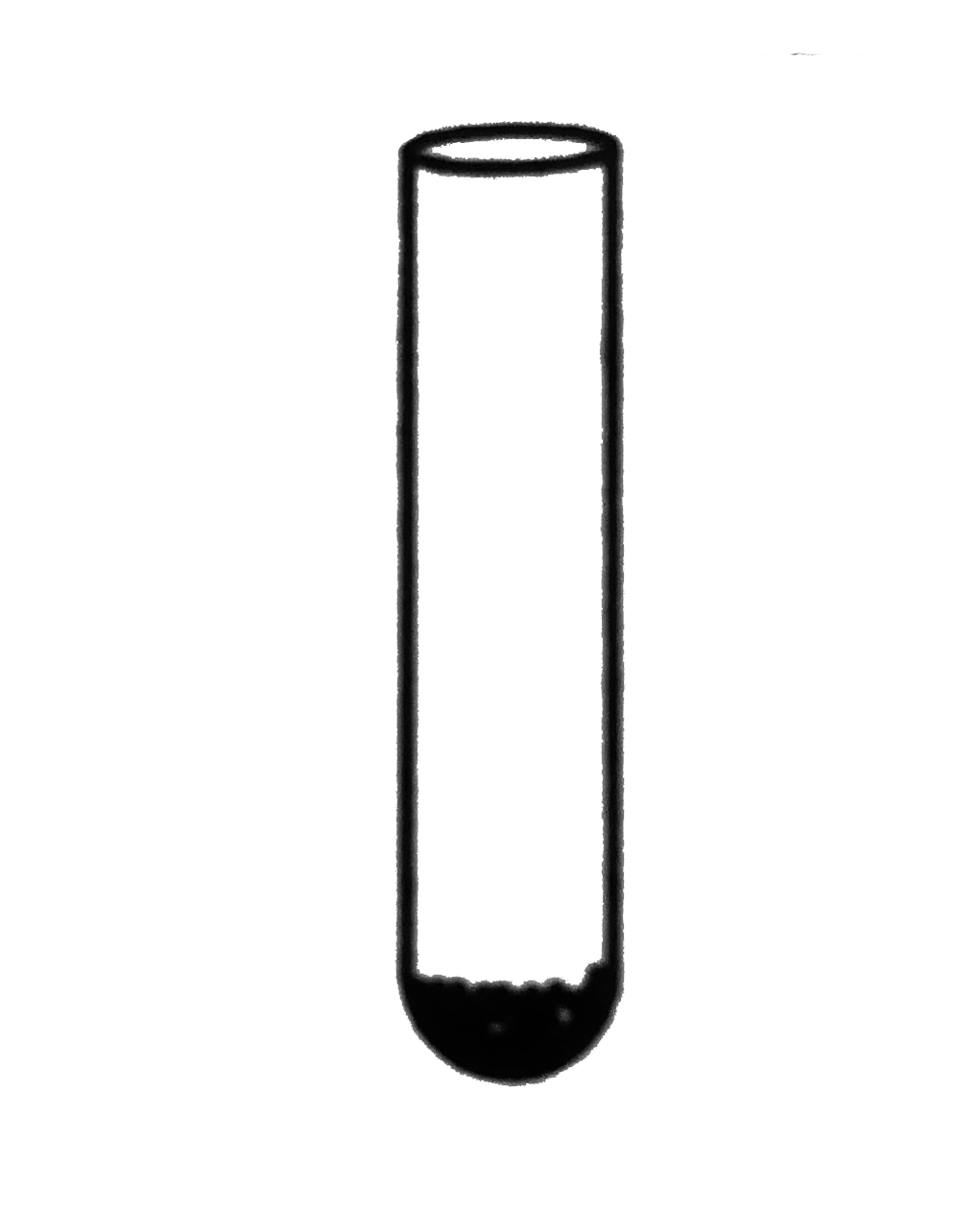
View SolutionA hydraulic automobile lift is designed to lift cars with a maximum mass of `3000Kg`. The area of cross section of the piston carrying the load is `425cm^(2)`. What maximum pressures would the smaller piston have to bear?
View SolutionA U tube contains water and methylated spirit separated by mercury. The mercury columns in the two arms are at the same level with 10 cm of water in one arm and 12.5 cm of spirit in the other as shown in figure. The relative density of the spirit is

View SolutionA u tube contains water and methylated spirit separated by mercury. The mercury columns in the two arms are at the same levels with 10 cm of water in one arm and 12.5 cm of spirit on the other arm as shown. If 15 cm of water and spirit each are further poured into the respective arms of the tube. Difference in the level of mercury in the two arms is (Take, relative density of mercury = 13.6, relative density of spirit=0.8)
View SolutionA manometer reads the pressure of a gas in a enclosure as shown in figure(a) When some of the gas is removed by a pump, the manometer reads as in (b). The liquid used in the manometers is mercury and the atmospheric pressure is `76 cm` of mercury.
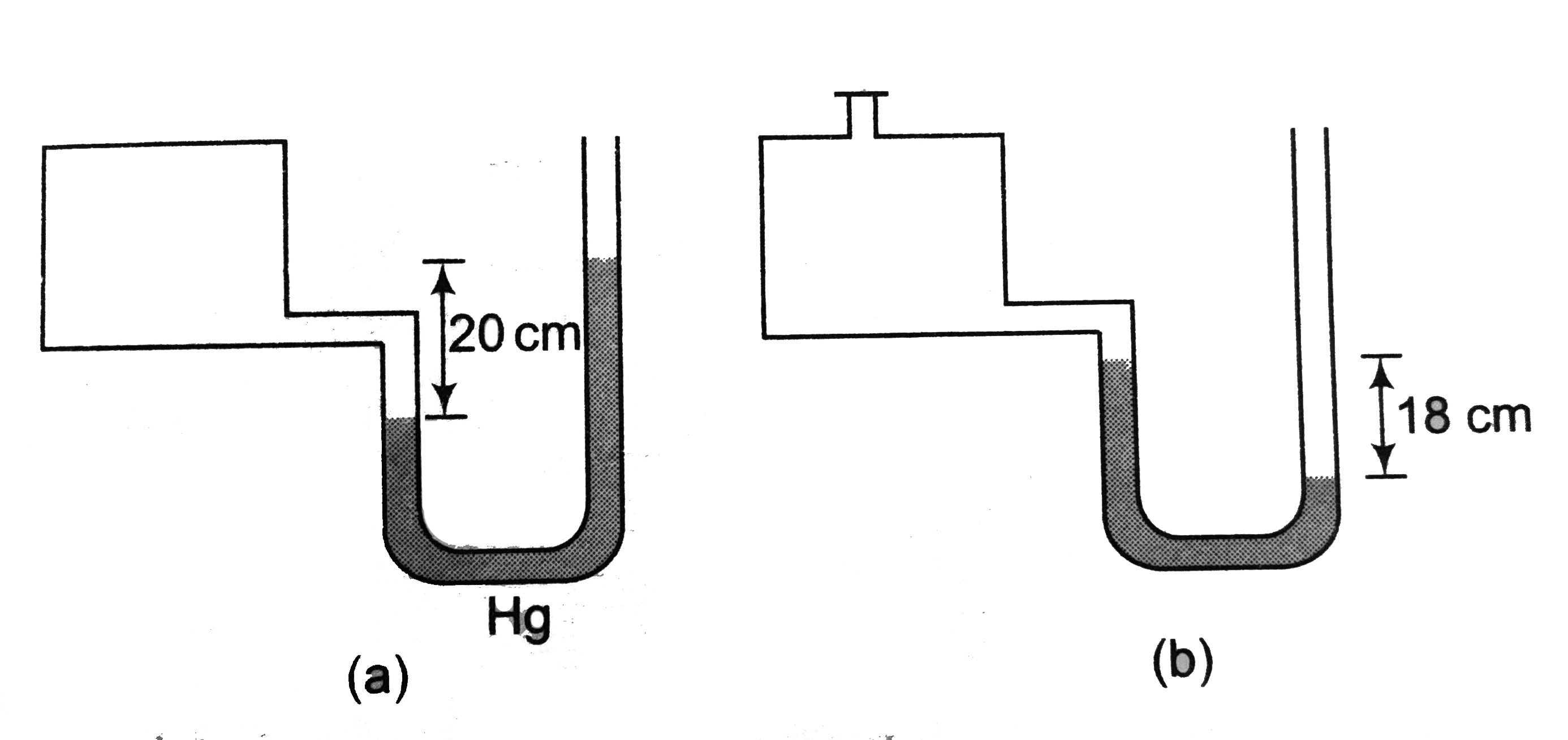
(i) Give the absolute and gauge pressure of the gas in the enclosure for cases (a) and (b) in units of cm of mercury .
(ii) How would the level change in case (b) if `13.6 cm` of water are poured into the right limb of the manometer?
View SolutionWater at `20^(@)` is flowing in a pipe of radius `20.0 cm` . The viscosity of water at `20^(@)C` is `1.005` centipise. If the water's speed in the centre of the pipe is `3.00m//s`, what is water's speed:
(a) `10.0cm` from the centre of the pipe(half way between the centre and the walls)
(b) at the wall of the pipe?
View SolutionAn irregular piece of metal weighs 10.00g in air and 8.00g when submerged in water
(a) Find the volume of the metal and its density.
(b) If the same piece of metal weighs 8.50g when immersed in a particular oil. What is the density of the oil?
View SolutionA tank contains water on top of mercury . A cube of iron, 60mm along each edge, is sitting upright in equilibrium in the liquids. Find how much of it is in each liquid. The densities of iron and mercury are `7.7xx10^(3)kg//m^(3)` and `13.6xx10^(3) kg//m^(3)` respectively
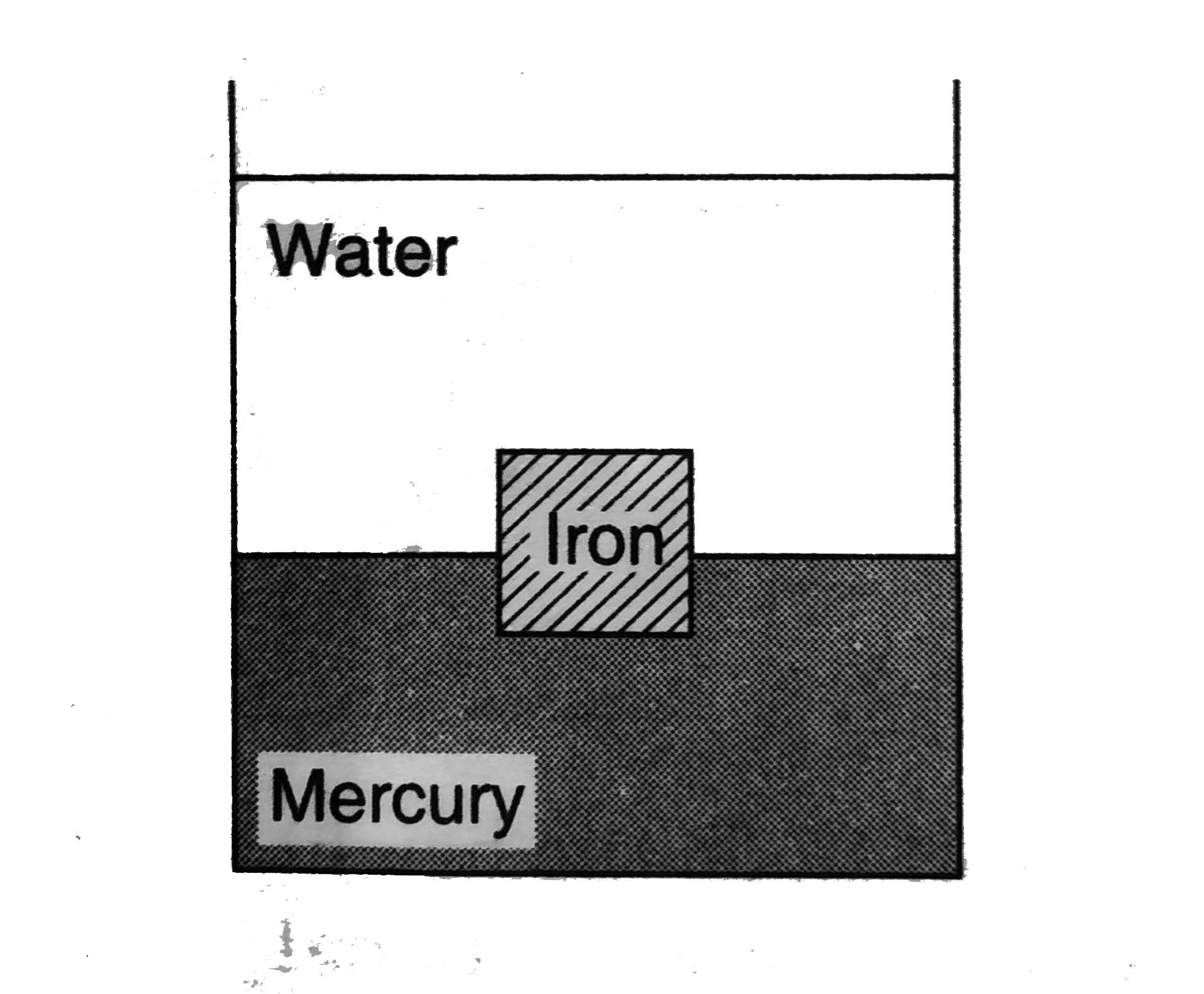
View SolutionA uniform rod AB, 4m long and weighing 12 kg, is supported at end A, with a 6 kg lead weight at B. The rod floats as shown in figure with one-half of its length submerged. The buoyant force on the lead mass is negligible as it is of negligible volume. Find the tension in the cord and the total volume of the rod
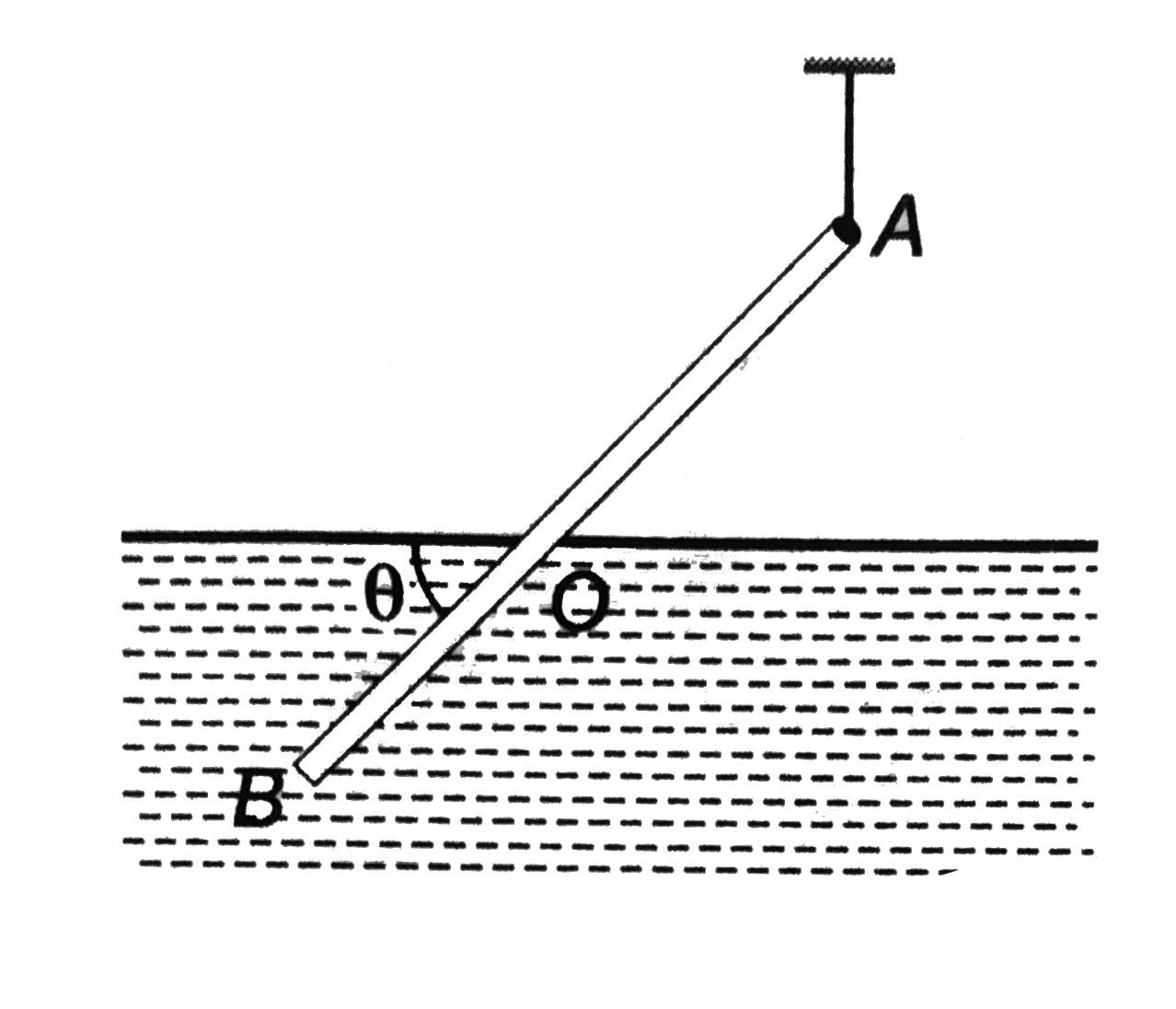
View SolutionA solid sphere of mass `m=2 kg` and density `rho=500kg//m^(3)` is held stationary relative to a tank filled with water. The tank is acceerating upward with acceleration `2m//s^(2)`. Calculate
(a) Tension in the thread connected between the sphere and the bottom of the tank.
(b) If the thread snaps, calculate the acceleration of sphere with respect to the tank. (Density of water`=1000kg//m^(3),g=10m//s^(2))`

View SolutionThe pressure gauge shown in figure has a spring for which `k=60N//m` and the area of the piston is `0.50cm^(2)`. Its right end is connected to a closed container of gas at a gauge pressure of `30kPa`. How far will the spring be compressed if the region containing the spring is (a) in vacuum and (b) open to the atmosphere? Atmospheric pressure is `101kPa`.
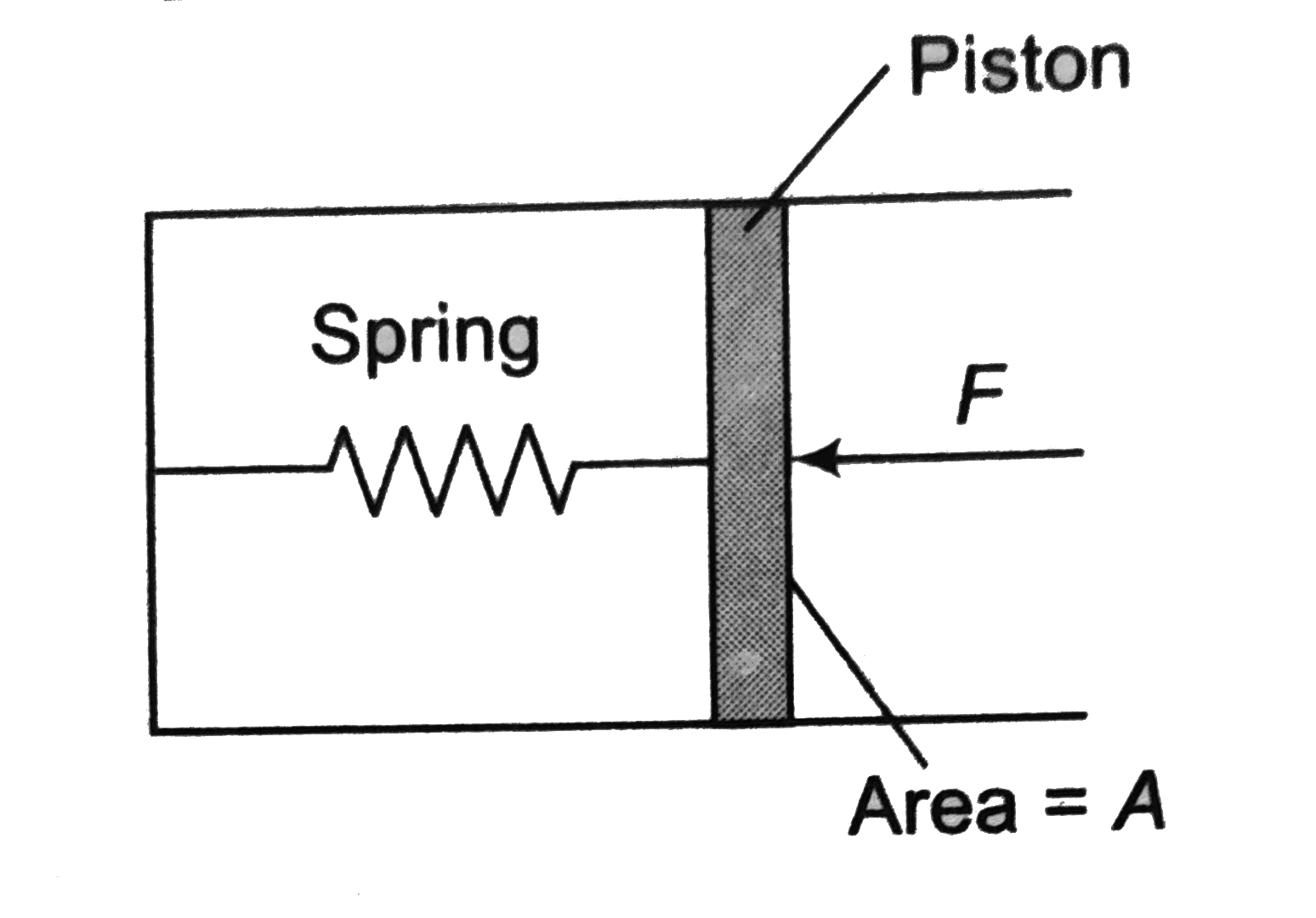
View SolutionWater stands at a depth h behind the vertical face of a dam. It exerts a resultant horizontal force on the dam tendibg to slide it along its foundation and a torque tending to overturn the dam about the point `O`. Find
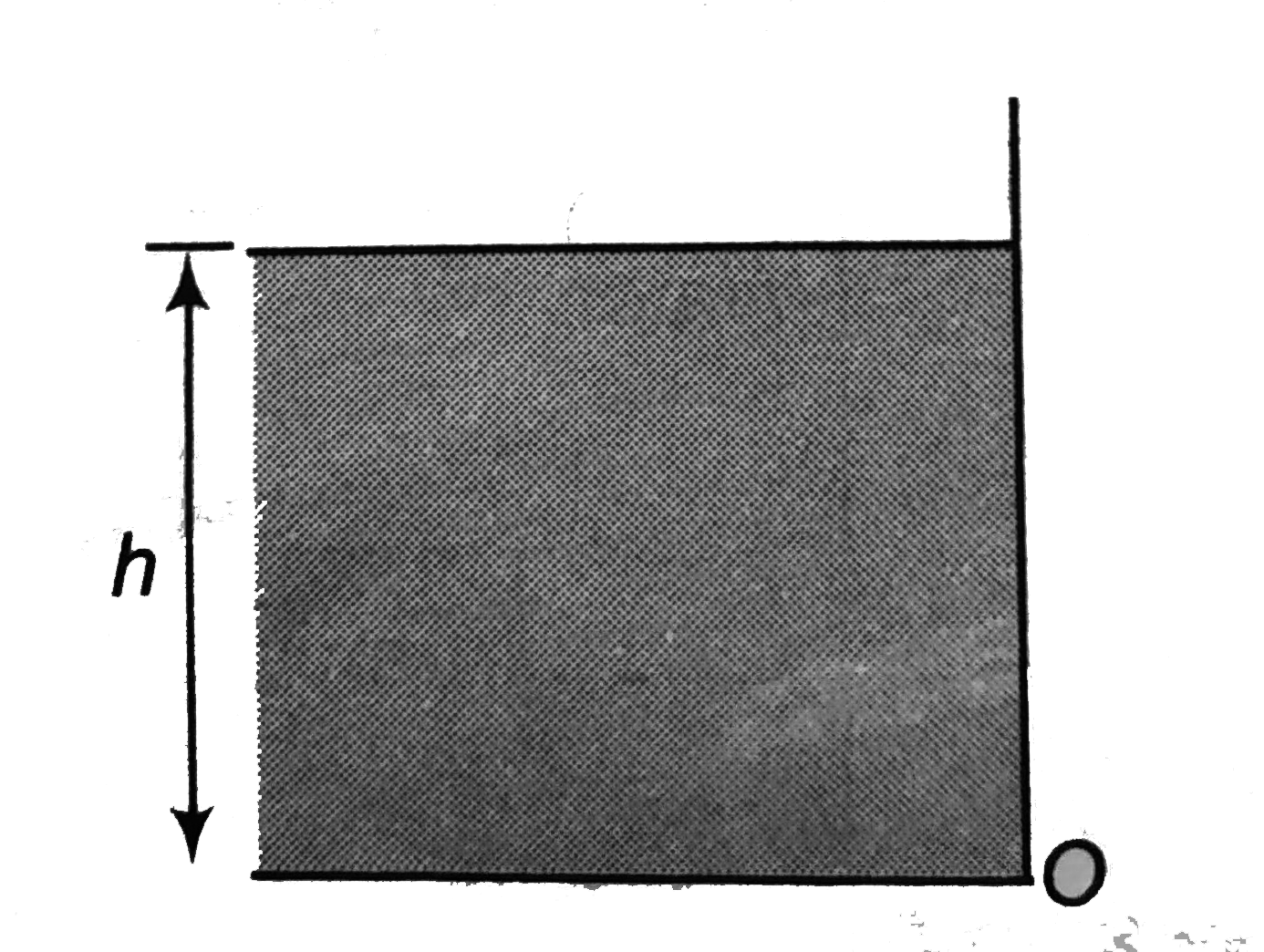
(a) Horizontal force,(b) torque about O, (c ) the height at which the resultant force would have to act to produce the same torque,l=cross-sectional length and `rho=`density of water.
View SolutionMercury is poured into a U-tube in which the cross-sectional area of the left-hand limb is three times smaller than that of the right one. The level of the mercury in the narrow limb is a distandce `l=30 cm` from the upper end of the tube. How much will the mercury level rise in the right-hand limb if the left one is filled to the top with water?
View SolutionA water barrel stands on a table of height h. If a small hole is punched in the side of the barrel at its base, it is found that the resultant stream of water strikes the ground at a horizontal distance R from the table . What is the depth of water in the barrel ?
View SolutionA pump is designed as a horizontal cylinder with a piston of area `A` and and outlet orifice of area `a` arranged near the cylinder axis. Find the velocity of out flow of the liquid from the pump if the piston moves with a constant velocity under the action of a constant force F. The density of the liquid is `rho`.
View SolutionWhen air of density `1.3kg//m^(3)` flows across the top of the tube shown in the accompanying figure, water rises in the tube to a height of `1.0cm`. What is the speed of air?
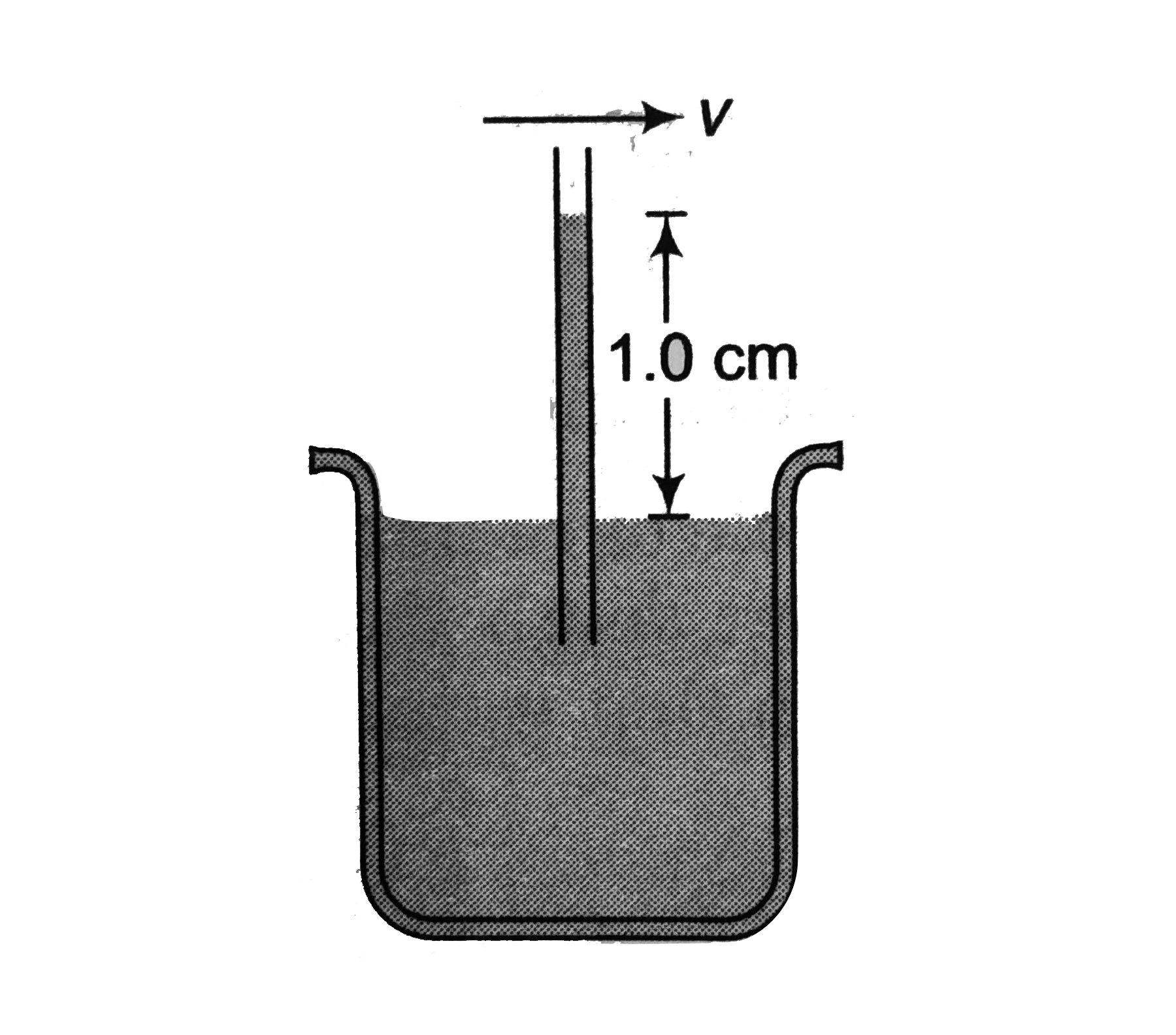
View SolutionA area of cross section of a large tank is `0.5m^2`. It has an opening near the bottom having area of cross section `1cm^2`. A load of 20 kg is applied on the water at the top. Find the velocity of the water coming out of the opening at the time when the height of water level is 50 cm above the bottom. Take `g=10ms^-2`
View SolutionWhat is the pressure drop (in mm Hg) in the blood as it passes through a capillary `1mm` long and `2mu m` in radius if the speed of the blood through the centre of the capillary is `0.66mm/s`? (The viscosity of whole blood is `4xx10^(-3) PI)`
View SolutionA glass capillary sealed at the upper end is of length `0.11 m` and internal diameter `2xx10^(5)`m. The tube is immersed vertically into a liquid of surface tension `5.06xx10^(-2)N//m`. To what length the capillary has to be immersed so that the liquid level inside and outside the capillary becomes the same. What will happen to water level inside the capillary if the seal is now broken?
View SolutionA film of water is formed between two straight parallel wires each `10 cm` long and at a seperation of `0.5 cm`. Calculate the work required to increase `1mm` distance between the wires. Surface tension of water `=72xx10^(-3)N//m`.
View SolutionA barometer contains two uniform capillaries of radii `1.4xx10^(-3)m` and `7.2xx10^(-4)m`. If the height of liquid in narrow tube is `0.2m` more than that in wide tube, calculate the true pressure difference. Density of liquid `=10^(3)kg//m^(3)`, surface tension `=72xx10^(-3)N//m` and `g=9.8ms^(-12)`.
View SolutionA liquid of specific gravity `1.5` is observed to rise `3.0 cm` in a capillary tube of diameter `0.50 mm` and the liquid wets the surface of the tube. Calculate the excess pressure inside a spherical bubble of `1.0 cm` diameter blown from the same liquid.
View SolutionA glass U-tube is such that the diameter of one limb is `3.0mm` and that of the other is 6.0mm. The tube is inverted vertically with the open ends below the surface of water in a beaker. What is the difference between the height to which water rises in the two limbs? Surface tension of water is `0.07Nm^(-1)`. Assume that the angle of contact between water and glass is `0^(@)`.
View SolutionA minute spherical air bubble is rising slowly through a column of mercury contained in a deep jar. If the radius of the bubble at a depth of `100 cm` is` 0.1mm`,Calculate its depth where its radius is `0.126mm`, given that the surface tension of mercury is `567 dyne//cm`. Assume that the atmosphere pressure is `76cm` of mercury.
View SolutionIf a number of little droplets of water, each of radius `r`, coalesce to form a single drop of radius `R`, show that the rise in temperature will be given by `(3T)/J(1/r-1/R)` where `T` is the surface tension of water and `J` is the mechanical equivalent of heat.
View SolutionAn empty container has a circular hole of radius r at its bottom. The container is pused into water very slowly as shown. To what depth the lower surface of container (from surface of water) can be pushed into water such that water does not flow into the container?

View Solution
Level 1 Subjective questions and complete solutions for chapter FLUID MECHANICS of DC PANDEY ENGLISH of Class 11
All Exercises from DC PANDEY Class 11 PHYSICS FLUID MECHANICS
- Assertion and Reason
- B) Medical entrance special format question
- Check point 13.1
- Check point 13.2
- Check point 13.3
- Check point 13.4
- Example
- Example 13.1
- Example 13.10
- Example 13.11
- Example 13.12
- Example 13.13
- Example 13.14
- Example 13.15
- Example 13.16
- Example 13.17
- Example 13.18
- Example 13.19
- Example 13.2
- Example 13.20
- Example 13.21
- Example 13.22
- Example 13.23
- Example 13.24
- Example 13.25
- Example 13.26
- Example 13.27
- Example 13.28
- Example 13.29
- Example 13.3
- Example 13.30
- Example 13.31
- Example 13.32
- Example 13.33
- Example 13.34
- Example 13.35
- Example 13.4
- Example 13.5
- Example 13.6
- Example 13.7
- Example 13.8
- Example 13.9
- Exercise16.1
- Exercise16.2
- Exercise16.3
- Exercise16.4
- Exercise16.5
- Exercise16.6
- Exercise16.7
- Exercise16.8
- Introductory Exercise
- Level 1 Assertion And Reason
- Level 1 Single Correct
- Level 1 Subjective
- Level 2 Comprehension Based
- Level 2 More Than One Correct
- Level 2 Single Correct
- Match the columns
- Medical entranes gallery
- Miscellaneous Examples
- Solved Examples
- Subjective
- Subjective Question
- Taking it together